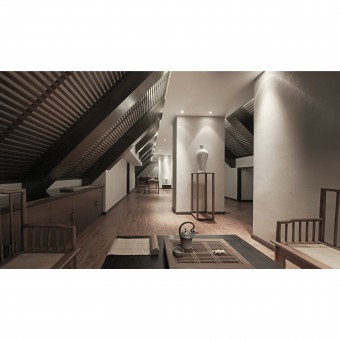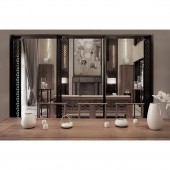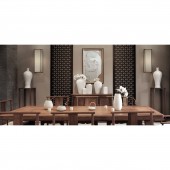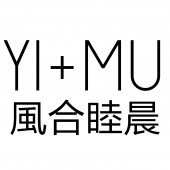Hongkan Lingshijun Pulin Type-C Villa Villa by YI Chen & Muchen Zhang |
Home > Winners > #43601 |
 |
|
||||
| DESIGN DETAILS | |||||
| DESIGN NAME: Hongkan Lingshijun Pulin Type-C Villa PRIMARY FUNCTION: Villa INSPIRATION: In such an impetuous era, implicit and refined Neo-Chinese style is the return to the origins of traditional Chinese culture and spirit, in a more contemporary way. Simple and straight modeling lines are used to present Chinese primitive and liberal; pastel neutral colors to determine elegance, coziness and natural delicacy. Perfectly fused with classic charm and modern comfort, traditional culture and modern element, they created a space filled with classic charm but easily satisfy contemporary aesthetics, to reflect the profound traditional culture of China in modern times. As graduates from the China Central Academy of Fine Arts with their major in traditional Chinese painting, Yi Chen and Muchen Zhang are two interdisciplinary designers who advocate minimalism by taking their distinctive understanding of traditional Chinese culture and using it to combine conservation and vacancy at both cultural and spiritual level. The term Dhyana refers to the idea of meditation and calmness, indicating vacancy, tranquility, simplicity and originality. It is both a realm and an attitude of life, with the realm being a state between tangibility and invisibility, the implicit conception a natural demonstration of the disposition of the Eastern spirit. In a given space, designers plan to use a contemporary modeling language method to determine the roof upon which traditional Chinese culture relies for sustainability; such sustainability of the cultural spirit and the manifestation of this elegant space is the most fundamental appeal of the design. This is also reflected in their own words taken from an interview: “Artistic conception is just like a part from a melody, permeating ubiquity and a certain type of feeling for those who experience it within a certain space. The formulation of virtual conception is the most crucial point; therefore, every single relationship between that of modeling, proportion, lighting, texture and color is to be coordinated with the formulation of virtual conception. On top of this, the subtle relationship between being virtual and tangible should be strictly controlled; while such a relationship exists, a connotation arises for the production of an artistic conception, finally resulting in a virtual space.” Creation of virtual is how the designers reinterpreted Dhyana into this whole space. UNIQUE PROPERTIES / PROJECT DESCRIPTION: The designers used plenty of traditional movable wooden screens; shape of those screens came from their intensive research of traditional decorative patterns; they became the only visual element of tradition in the whole space. The use of screens reflected Chinese scenery theory of virtual and tangible. The virtual are fulfilled by the tangible, the tangible are upgraded by the virtual, and that became a unique construction mode of this design. Therefore the overall layout and atmosphere present an oriental living style of spiritual dreamland. The original building contains four floors, each can be seen by the other; they seem exposed and interactive to each other, but still independently closed to themselves. You linger wherever you walk, but still wonder some exceeding beauty hidden somewhere else. Rocks, still water, scenery corners and blank spaces are exactly like Chinese landscape paintings. The meaning of life is adjusted; it`s like walking back to your tranquil old house, immersing into your nostalgic dreams. OPERATION / FLOW / INTERACTION: Wooden screens and windows are the essential elements. They are the most vivid symbols of Chinese traditional mansion. The use of screens are flexible; the screens on the first floor are room-high, and extend to the roof of the second floor, which make it an all surrounded courtyard like Chinese old mansion. In the hallway and corridors, water system scenery is used, which shows the beauty of Taihu Stone. The same screen partitions are also used on the second floor and corridor on the ground floor. Unexpectedly, they even used wooden screens on the sloping rooftop which remind people the most traditional wood beam, purline and rafter in old Chinese houses. House design has become more and more urbanism, for this project, designers tried to keep the essence of Chinese culture by using traditional elements in contemporary ways. PROJECT DURATION AND LOCATION: The villa is in Tian Jin,China.it took about 4 months FITS BEST INTO CATEGORY: Interior Space and Exhibition Design |
PRODUCTION / REALIZATION TECHNOLOGY: Wood grain marble,Wallpaper,T SPECIFICATIONS / TECHNICAL PROPERTIES: 600 square meters TAGS: Oriental style, dhyana, grilling, screen RESEARCH ABSTRACT: As graduates from the China Central Academy of Fine Arts with their major in traditional Chinese painting, Yi Chen and Muchen Zhang are two interdisciplinary designers who advocate minimalism by taking their distinctive understanding of traditional Chinese culture and using it to combine conservation and vacancy at both cultural and spiritual level. The term Dhyana refers to the idea of meditation and calmness, indicating vacancy, tranquility, simplicity and originality. It is both a realm and an attitude of life, with the realm being a state between tangibility and invisibility, the implicit conception a natural demonstration of the disposition of the Eastern spirit. In a given space, designers plan to use a contemporary modeling language method to determine the roof upon which traditional Chinese culture relies for sustainability; such sustainability of the cultural spirit and the manifestation of this elegant space is the most fundamental appeal of the design. This is also reflected in their own words taken from an interview: “Artistic conception is just like a part from a melody, permeating ubiquity and a certain type of feeling for those who experience it within a certain space. The formulation of virtual conception is the most crucial point; therefore, every single relationship between that of modeling, proportion, lighting, texture and color is to be coordinated with the formulation of virtual conception. On top of this, the subtle relationship between being virtual and tangible should be strictly controlled; while such a relationship exists, a connotation arises for the production of an artistic conception, finally resulting in a virtual space.” CHALLENGE: Recent years, modern Chinese style has more and more become the trend and interest of clients and designers. After 30 years development of economy, Chinese culture, on the contrary, is at a standstill, traditions have been fading and being forgotten. Chinese need to search for our cultural roots and that become a great challenge for designer. Mimic the external form could not be the way; designers have to understand the inner spirit and essence of traditional Chinese culture; then they could be used on function, forms, material and color. That was a tough and a must experience process. ADDED DATE: 2015-10-31 14:37:20 TEAM MEMBERS (2) : Yi Chen and Muchen Zhang IMAGE CREDITS: Zhiyi Zhou PATENTS/COPYRIGHTS: The design is our original design.We have complete power of interpretation of this design. |
||||
| Visit the following page to learn more: https://www.fenghemuchen.com | |||||
| AWARD DETAILS | |
 |
Hongkan Lingshijun Pulin Type-C Villa Villa by Yi Chen & Muchen Zhang is Winner in Interior Space and Exhibition Design Category, 2015 - 2016.· Read the interview with designer YI Chen & Muchen Zhang for design Hongkan Lingshijun Pulin Type-C Villa here.· Press Members: Login or Register to request an exclusive interview with YI Chen & Muchen Zhang . · Click here to register inorder to view the profile and other works by YI Chen & Muchen Zhang . |
| SOCIAL |
| + Add to Likes / Favorites | Send to My Email | Comment | Testimonials | View Press-Release | Press Kit |
Did you like Yi Chen & Muchen Zhang's Interior Design?
You will most likely enjoy other award winning interior design as well.
Click here to view more Award Winning Interior Design.








